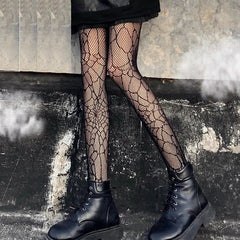In the realm of fashion, where trends come and go like whispers in the wind, one style has stood the test of time with unwavering presence and a haunting allure: Gothic clothing. From the cobblestone streets of Victorian England to the bustling avenues of modern metropolises, Gothic fashion has carved its niche, captivating hearts with its dark elegance and enigmatic charm.
What exactly defines Gothic clothing? It's more than just a style; it's a statement, a lifestyle, an expression of individuality draped in layers of black lace and velvet. Rooted in the Romantic and Victorian eras, Gothic fashion draws inspiration from literature, art, and architecture, channeling the mystique of medieval castles and the brooding melancholy of Gothic novels.
At its core, Gothic clothing is characterized by its dramatic silhouettes, rich textures, and ornate details. Think billowing sleeves, corseted bodices, and cascading skirts, adorned with lace, velvet, and intricate embroidery. It's a marriage of opulence and austerity, where darkness intertwines with beauty to create an aesthetic that is both haunting and enchanting.
But Gothic fashion is more than just a visual spectacle; it's a subculture that embraces individuality and non-conformity. In a world where the mainstream dictates norms and trends, Goths carve their own path, reveling in the beauty of the unconventional. From the romantic Goths, who draw inspiration from Victorian mourning attire, to the cyber Goths, with their neon accents and futuristic flair, Gothic fashion is a diverse tapestry woven with threads of creativity and rebellion.
One of the most iconic pieces in Gothic fashion is the corset. Evoking images of bygone eras and forbidden desires, the corset is not just a garment but a symbol of feminine power and allure. Worn tight-laced to sculpt the waist into an hourglass figure, the corset embodies the tension between restriction and liberation, tradition and defiance.
Another staple of Gothic clothing is the flowing cloak, reminiscent of mysterious figures lurking in the shadows of moonlit forests. Whether adorned with intricate brocade or lined with sumptuous velvet, the cloak adds an air of drama and intrigue to any ensemble, transforming its wearer into a timeless enigma.
Of course, no discussion of Gothic fashion would be complete without mentioning the quintessential color: black. Symbolizing darkness, mystery, and rebellion, black is more than just a hue; it's a statement of identity and defiance. In a world awash with bright colors and flashy patterns, black stands out as a symbol of understated elegance and timeless sophistication.
But Gothic fashion is not confined to the past; it continues to evolve and reinvent itself in the modern age. From the fusion of Gothic and punk influences in the 1980s to the emergence of Gothic Lolita fashion in contemporary Japan, Gothic clothing transcends boundaries of time and culture, embracing diversity and innovation.
In recent years, Gothic fashion has found a new home in the world of high fashion, with designers drawing inspiration from its dark aesthetic and romantic sensibility. From Alexander McQueen's hauntingly beautiful collections to Gucci's Gothic-infused runway shows, Gothic fashion has cemented its place in the hallowed halls of couture, proving that darkness can indeed be the ultimate form of elegance.
But perhaps the true allure of Gothic clothing lies not in its outward appearance, but in the sense of empowerment it instills in its wearers. In a society that often demands conformity and uniformity, Gothic fashion offers a sanctuary for those who dare to be different, a canvas upon which they can express their true selves without fear or hesitation.
So, whether you're drawn to the ethereal beauty of Victorian mourning attire or the rebellious spirit of cyber Goth, embrace the darkness within and let your style be a reflection of the enigmatic soul that lies beneath. For in the realm of Gothic fashion, the only limit is your imagination, and the journey into darkness is as endless as it is alluring.



